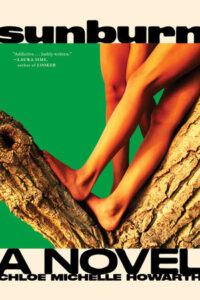This first appeared in Lit Hub’s Craft of Writing newsletter—sign up here.
The deeper you are into the work, the more weight the ending seems to carry. It’s not just the ending of the book for the reader, but the end of an era for the writer. And although you might have an innate feeling that it’s time for your story to end, that doesn’t always mean you know how it’s going to end.
When writing Sunburn I spent a long time mulling over the ending, turning different outcomes over and over in my head. With every page I wrote, the ending was there in the back of my mind, unclear and unknown. Nothing I landed on felt right. I couldn’t seem to find something that did the character’s or the story any justice.
I knew from the beginning that I wanted to avoid a happily ever after, because I had spent a lot of time trying to make the characters and story feel real. A “perfect” ending just wouldn’t have made sense for the story I was telling, and might even have felt false or cheap. But soon, I began to realise that any ending I thought of which tied everything up nicely and neatly felt wrong. I started to wonder if there was a right way to end the story at all. Then I realized, I didn’t have to end it—at least, not in the way that I thought.
Sunburn is a coming-of-age story. It really revolves around the protagonist, Lucy, and her journey of self-discovery, the tribulations she suffers to accept herself, and the ever-evolving relationship she has with her first love, Susannah. A novel like this, which is all about the complexities of relationships and the road to figuring yourself out, wants an ending that is a little bit nebulous. When the characters are always changing, it wouldn’t have fit the tone or felt true to them to end with a concrete resolution. Not telling the reader exactly how things end, rather, presenting them with possibilities.
My favorite novels are those that leave you thinking. That get your imagination working, and have you considering the characters and their lives long after you’ve closed the book.
By the end of Sunburn, Lucy and Susannah are in their early twenties, at a time in their lives where the world is opening up to them, and they can start to make choices for themselves. I finally understood that the novel should end with these possibilities, so that the ending could feel like a new beginning. A story that is all about the complexities of relationships can never really have a conclusion, because one day always leads to the next—a feeling always sparks more feelings. A character like Lucy is too passionate and messy to ever come to a halt. So I found that it wasn’t about wrapping up and closing out the story, it was finding the point to stop following her story.
When I meet people who have read Sunburn, something we often talk about is the ending. Yes, they want more details, they want to know what happens beyond the last page, and they want more Lucy and Susannah; but they understand why it had to end the way that it did. A little messy, a little unclear, just like the whole novel. My favorite novels are those that leave you thinking. That get your imagination working, and have you considering the characters and their lives long after you’ve closed the book.
So the question is, when does a vague ending serve more of a purpose than a clear one? And how do you find the balance between a satisfyingly vague ending and just teasing readers with a cliffhanger?
I think the key is in the lead up. If a reader knows your character inside and out, then they will be able to pick up the cues you leave, and imagine how things will go for them. A character like Lucy is insecure, manipulative, and desperate to be loved. Throughout the novel we see her evolve, shedding some of these traits, and leaning further into others. Having spent the whole book in Lucy’s head, the reader will know what she wants, and what choice lies before her. As a writer, I don’t think it’s always necessary to spill all the details. It’s a good skill to know what to hold back, and what to let the reader decide for themselves.
I don’t think Lucy and Susannah’s story ends on the last page of Sunburn. I think it could go on and on and on. So rather than trying to crowbar in a neat ending to a very complex relationship, I chose the best point to leave them alone. To let their story carry on without us.
The last word on the last page does not need to be the ending at all. It can be a jumping off point. A place where readers can let their imaginations take over. Hopefully you’ve written characters that they want to stay with a little while longer, and you can let them. Sometimes, a very sure ending can feel harsh, like a book is being slammed shut in your face before you are ready to let it go. Too many unanswered questions can feel cruel, but just the right amount creates space for the imagination to roam. When readers ask me how Sunburn really ends, I tell them that it ends however they want it to. After the last page, it’s as much their story as it is mine.
_______________________________________

